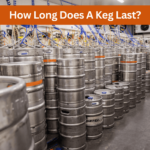Where is Budweiser made? This is a question that has always intrigued me, especially after discovering how much I enjoy this particular beer. As a beer enthusiast, I always make it a point to learn about the origin and production process of my favorite beers. My curiosity led me to research Budweiser Beer, and I discovered fascinating facts about this iconic brand. From its humble beginnings in a small town in Czech Republic to becoming a global phenomenon, Budweiser has captured the hearts of beer lovers worldwide. So, join me on this journey as we explore where is budweiser made and learn more about its history, production process, and locations.
History of Budweiser beer
Budweiser is an American-style pale lager beer that has become a household name across the globe. The beer is brewed using the finest ingredients and a unique brewing process that has remained unchanged for over 140 years. At this point, we will explore the history of Budweiser beer, including when it was made and where is Budweiser made.
When was Budweiser made?
Budweiser was first brewed in 1876 by Anheuser-Busch, a company that was founded in St. Louis, Missouri in 1852. The beer was created by Adolphus Busch, a German immigrant who had married into the Anheuser family. Busch was determined to create a beer that would appeal to the American palate, and he succeeded with Budweiser.
Budweiser quickly became popular in the United States, and by the early 20th century, it was one of the best-selling beers in the country. Today, Budweiser is available in more than 80 countries and is one of the most recognizable beer brands in the world.
Where is Budweiser beer made?
Do you know where is Budweiser made? The primary Budweiser beer production plant is located in St. Louis, Missouri, where the beer was first brewed. The St. Louis brewery covers over 100 acres and produces more than 16 million barrels of beer each year. In addition to the St. Louis brewery, Anheuser-Busch has several other production plants in the United States, including in New York, Colorado, California, and Georgia.
Budweiser is also brewed in other countries around the world. For example, in Europe, the beer is brewed by Budějovický Budvar, a Czech brewery that holds the trademark for the term “Budweiser” in most of Europe. Anheuser-Busch also has production plants in China, Brazil, and other countries.
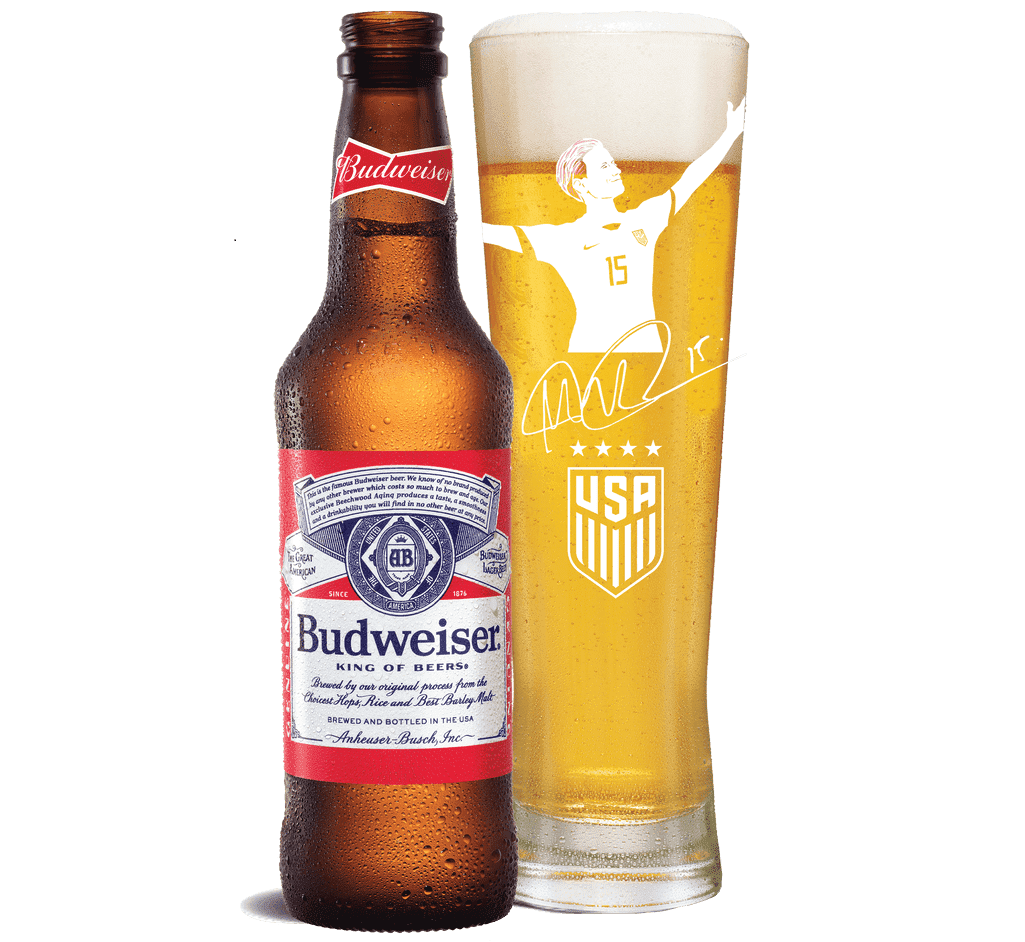
What is Budweiser made out of?
Budweiser is made out of the following ingredients:
- Water: Water is the primary ingredient in Budweiser beer, making up approximately 90% of the beer’s content.
- Malt: Malted barley is the second most important ingredient, providing the beer’s distinctive flavor and color.
- Hops: Hops are used to balance the sweetness of the malt with a bitter flavor and aroma. The type of hops used can affect the flavor and aroma of the beer.
- Rice: Rice is used in the brewing process to lighten the body of the beer and to give it a crisp, clean taste.
- Yeast: Yeast is added to the beer to begin the fermentation process, which converts the sugars in the malt and rice into alcohol.
These ingredients are carefully selected and blended in a specific ratio to produce the unique flavor and aroma of Budweiser beer.
The brewing process of Budweiser beer
How Budweiser is made? The brewing process of Budweiser beer involves several steps that are carefully monitored to ensure the beer’s high quality and consistency in taste. Here is an overview of the brewing process of Budweiser beer:
- Step 1 – Milling: The brewing process starts with milling, where the malted barley is ground into a fine powder called grist.
- Step 2 – Mashing: The grist is then mixed with hot water in a large tank called a mash tun, where enzymes in the malt convert the starches into sugars. This process is known as mashing, and the resulting liquid is called wort.
- Step 3 – Boiling: The wort is transferred to a large brew kettle where it is boiled with hops. This step is important in creating the beer’s flavor, as the hops give the beer its characteristic bitterness and aroma.
- Step 4 – Fermentation: After boiling, the wort is cooled and transferred to a fermentation tank, where yeast is added. The yeast converts the sugars in the wort into alcohol and carbon dioxide, producing beer.
- Step 5 – Aging: The beer is then aged in large tanks for several weeks, allowing it to develop its flavor and clarity.
- Step 6 – Filtration and Packaging: The beer is then filtered to remove any remaining yeast and other particles, and then packaged in bottles or cans.
Throughout the brewing process, strict quality control measures are in place to ensure that the beer meets Budweiser’s high standards. The use of high-quality ingredients, combined with a precise brewing process, is what gives Budweiser its signature crisp, clean taste.
What grain is Budweiser made from?
Budweiser beer is made from malted barley and rice. The use of rice is one of the unique features of Budweiser, as it helps to lighten the body of the beer and give it a crisp, clean taste. The combination of malted barley and rice, along with hops, yeast, and water, is what gives Budweiser its distinctive flavor and aroma.
Why is Budweiser made with rice?
Budweiser beer is made with rice for several reasons, including:
- Lighter body: Rice is a fermentable sugar that contributes to the alcohol content of the beer while lightening the body. This makes the beer easier to drink and gives it a crisp, clean taste.
- Consistency: Rice is a consistent ingredient that is readily available year-round, unlike barley, which can be affected by weather and other factors. Using rice in the brewing process helps ensure that the beer has a consistent flavor and aroma.
- Tradition: The use of rice in brewing beer is a tradition that dates back to ancient times in Asia. Adolphus Busch, the creator of Budweiser, believed that using rice in the brewing process would give the beer a unique flavor and set it apart from other beers.
- Cost: Rice is a less expensive ingredient than malted barley, which makes up for the cost of the brewing process. Using rice in the brewing process helps keep the price of Budweiser beer competitive.
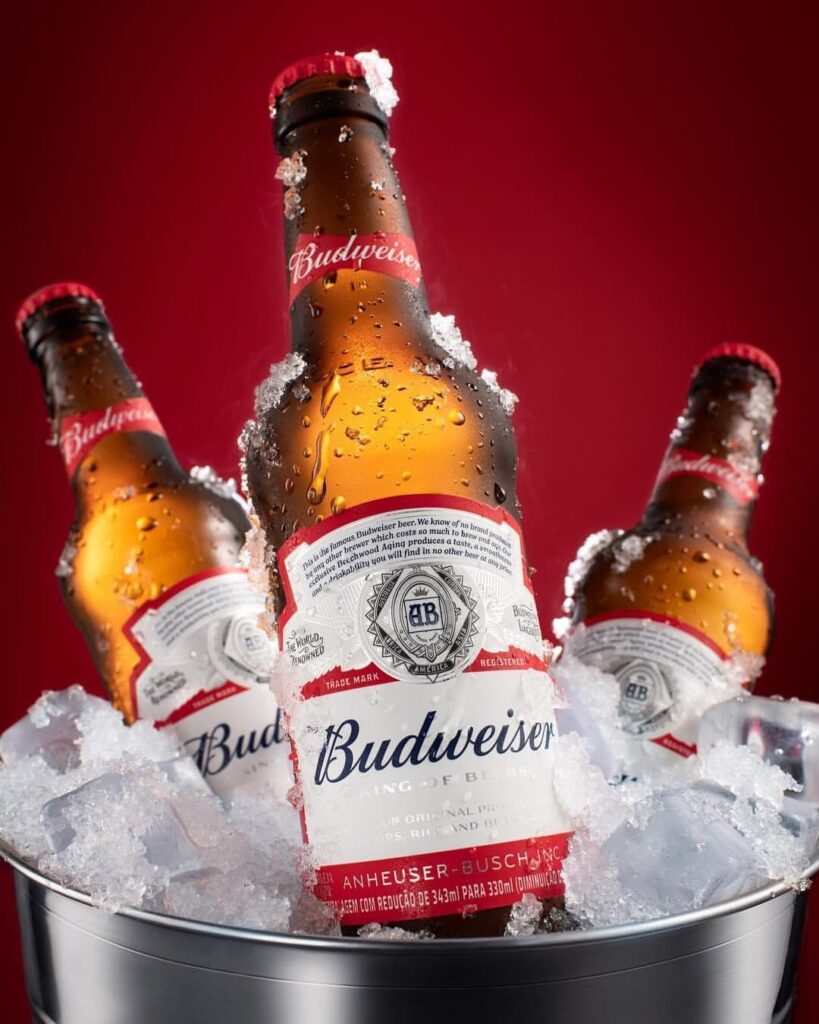
Information about Budweiser Zero
Budweiser Zero is a non-alcoholic beer that was introduced by Anheuser-Busch, the makers of Budweiser beer, in 2020. It is a low-calorie, low-carbohydrate, and low-alcohol beer that is made using a unique brewing process and high-quality ingredients.
Where is Budweiser Zero made?
Budweiser Zero is produced at the Anheuser-Busch breweries in the United States, including the primary production plant in St. Louis, Missouri, and other breweries in Colorado, New York, California, and Georgia. The non-alcoholic beer is also produced at other Anheuser-Busch production plants around the world, depending on the demand for the product in each region.
What is Budweiser Zero made of?
Budweiser Zero is made using the same high-quality ingredients as traditional Budweiser beer, but with a different recipe that eliminates the alcohol content. The beer is made using water, barley malt, hops, yeast, and natural flavors.
How is Budweiser Zero made?
Budweiser Zero is made using a unique brewing process that involves several steps, including milling, mashing, boiling, fermentation, and aging. The brewing process is similar to that of traditional Budweiser beer, with the exception that the alcohol is removed during the brewing process.
- To make Budweiser Zero, the malted barley is first ground into a fine powder called grist, which is then mixed with hot water in a large tank called a mash tun.
- Enzymes in the malt convert the starches into sugars, and the resulting liquid, called wort, is boiled with hops.
- After boiling, the wort is cooled and transferred to a fermentation tank, where yeast is added.
- The yeast converts the sugars in the wort into alcohol and carbon dioxide, but in the case of Budweiser Zero, the alcohol is then removed.
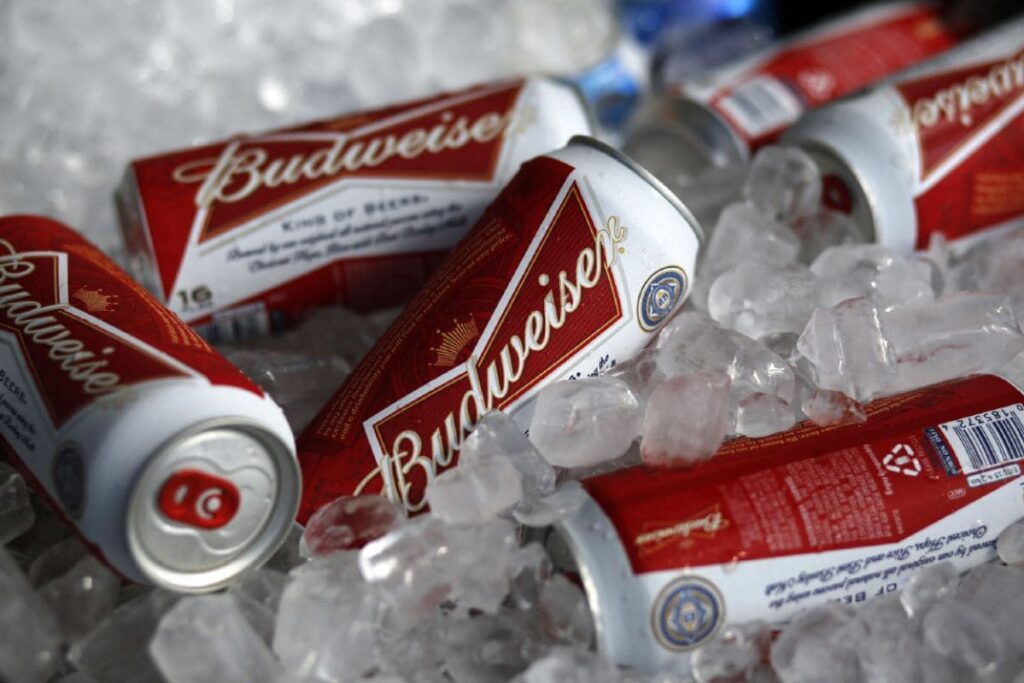
Comparison between Budweiser and Budweiser Budvar
| Feature | Budweiser | Budweiser Budvar |
| Origin | United States | Czech Republic |
| Production | Anheuser-Busch InBev | Budějovický Budvar Brewery |
| Alcohol Content | 5% | 5% |
| Ingredients | Water, barley malt, rice, hops, yeast | Water, Moravian barley malt, Saaz hops, yeast |
| Flavor | Crisp, clean, and refreshing | Rich, full-bodied with a slightly bitter taste |
| Color | Pale golden | Amber |
| Aroma | Mild, with a slight hop aroma | Earthy, floral, and slightly spicy |
| Serving Temperature | 39-45°F (4-7°C) | 46-50°F (8-10°C) |
| Availability | Widely available in over 80 countries | Limited availability outside Europe |
| Price | Generally affordable and competitively priced | Higher priced than other beer brands |
Budweiser beer production locations
Budweiser is one of the most popular beer brands in the world, and it is brewed in several locations across the globe. Let’s explore where Budweiser is brewed in the United States and globally.
How many Budweiser factories are there?
Budweiser is a brand of beer owned by Anheuser-Busch InBev, which operates over 100 breweries in more than 50 countries around the world. The exact number of Budweiser factories is not publicly disclosed, but it is safe to say that there are numerous factories producing Budweiser beer globally.
Where is Budweiser made in the US?
In addition to the St. Louis brewery, Anheuser-Busch has several other production plants in the United States. These include breweries in:
Budweiser is primarily brewed in the United States at the Anheuser-Busch brewery in St. Louis, Missouri. This is the original brewery where Adolphus Busch first brewed Budweiser beer in 1876. The St. Louis brewery covers over 100 acres and produces more than 16 million barrels of beer each year.
- Fairfield, California
- Fort Collins, Colorado
- Houston, Texas
- Jacksonville, Florida
- Merrimack, New Hampshire
- Newark, New Jersey
- Van Nuys, California
- Williamsburg, Virginia
Each brewery has its own unique production process, but they all follow the same standards for quality and consistency in taste.
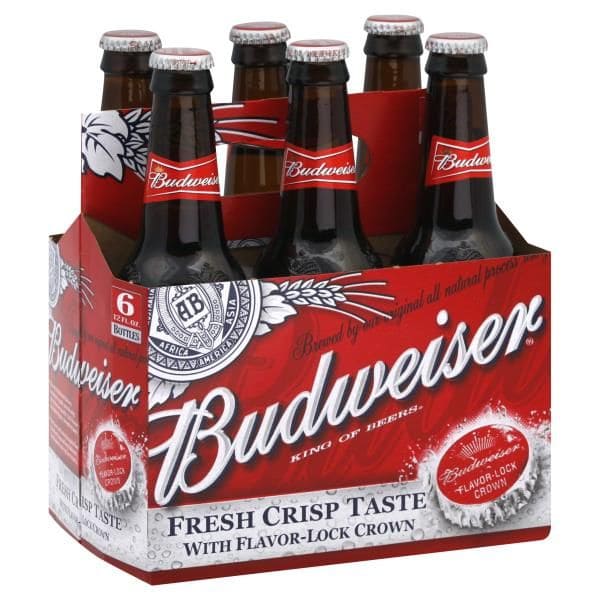
Where is Budweiser made globally?
Budweiser is brewed in several countries around the world. Anheuser-Busch has production plants in more than 50 countries, including:
- Argentina
- Belgium
- Brazil
- Canada
- China
- Colombia
- Germany
- India
- Japan
- Mexico
- Netherlands
- Nigeria
- Russia
- South Africa
- South Korea
- Spain
- Ukraine
- United Kingdom
- Vietnam
Each production plant uses the same high-quality ingredients and brewing process to ensure that Budweiser beer has the same consistent flavor and aroma, regardless of where it is brewed.
How much money has Budweiser made?
Based on the financial reports, Anheuser-Busch, the parent company of Budweiser, generated a revenue of $57.786 billion for the twelve months ending on December 31, 2022. This marks a year-over-year increase of 6.41%.
In 2021, the company’s annual revenue was $54.304 billion, reflecting a significant increase of 15.83% from 2020. These figures demonstrate that Anheuser-Busch has been successful in growing its revenue over the past few years, indicating the popularity and profitability of its beer brands, including Budweiser.
Quality control measures at Budweiser
Budweiser is known for its high quality and consistency in taste, and this is achieved through the implementation of rigorous quality control measures throughout the entire brewing process. Here are some of the quality control measures that are in place at Budweiser:
- Ingredient selection: Budweiser uses only the highest quality ingredients, such as carefully selected hops, rice, barley, and yeast, which are sourced from around the world. The ingredients undergo thorough testing to ensure they meet the company’s high standards.
- Brewing process: The brewing process at Budweiser is carefully monitored and controlled to ensure consistent quality. Temperature, pH, and fermentation time are all tightly controlled to ensure the desired flavor and aroma are achieved.
- Quality testing: Throughout the brewing process, the beer undergoes numerous quality tests, including sensory evaluations, chemical analysis, and microbiological testing. This ensures that the beer meets the company’s stringent quality standards before it is released to the market.
- Packaging: The beer is packaged in special cans and bottles that are designed to maintain the beer’s freshness and quality. The packaging is also rigorously tested to ensure it meets the company’s high standards.
- Distribution: The beer is distributed to retailers and bars in temperature-controlled vehicles to ensure the beer remains at its optimal quality until it is consumed.
These quality control measures ensure that Budweiser maintains its reputation for high quality and consistency in taste, and that customers can enjoy a great-tasting beer every time they purchase a Budweiser product.

Sustainability efforts by Budweiser
Budweiser, like many other companies, recognizes the importance of sustainability and has implemented several initiatives to reduce its environmental impact. Here are some examples of the sustainability efforts by Budweiser:
- Water conservation: Budweiser has implemented several measures to reduce water consumption in its brewing operations. These include using rainwater for landscaping, recycling water used in the brewing process, and implementing water-saving technologies in its breweries.
- Renewable energy: Budweiser is committed to reducing its greenhouse gas emissions and has set a target to use 100% renewable electricity in its brewing operations by 2025. The company has already made significant progress towards this goal by installing solar panels at several of its breweries.
- Packaging: Budweiser has set a goal to use 100% recycled content in its packaging by 2025. The company is also exploring alternative packaging options, such as paper-based beer bottles and edible six-pack rings.
- Sustainable agriculture: Budweiser works closely with its farmers to ensure sustainable agricultural practices are used in the production of its ingredients, such as barley and hops. This includes providing training and resources to farmers to help them adopt more sustainable practices.
- Community engagement: Budweiser is committed to giving back to the communities where it operates. The company has implemented several programs to support local communities, such as water stewardship initiatives and disaster relief efforts.
The impact of Budweiser Beer on culture and society
Budweiser Beer, as one of the most popular beer brands in the world, has had a significant impact on culture and society. Here are some examples:
- Sports: Budweiser has been a long-time sponsor of major sports events, such as the Super Bowl and the FIFA World Cup, which has helped to promote the brand and increase its visibility. Budweiser has also sponsored several professional sports teams, including the MLB’s St. Louis Cardinals and the NBA’s Miami Heat.
- Music: Budweiser has sponsored several music festivals and concerts, such as the Budweiser Made in America Festival, which has helped to promote the brand and support the music industry.
- Advertising: Budweiser has been known for its creative and memorable advertising campaigns, such as the iconic “Whassup?” commercials and the Clydesdale horses ads. These campaigns have helped to establish the brand’s identity and promote its products.
- Socializing: Budweiser, like many other beer brands, is often associated with socializing and relaxation. It has become a popular drink choice for many social gatherings, such as parties, BBQs, and sporting events.
- Job Creation: Budweiser has created thousands of jobs across the globe, from farmers who grow the ingredients to brewery workers who produce the beer and drivers who transport it.
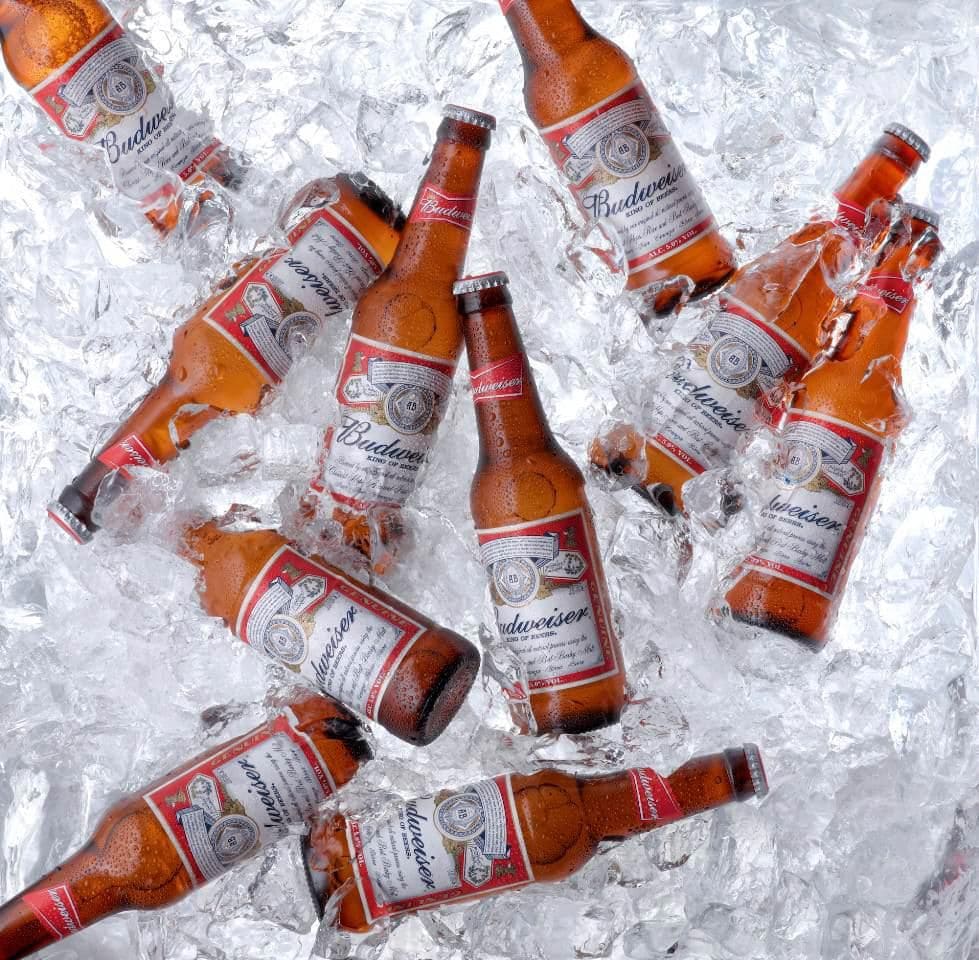
FAQs
Is Budweiser still the king of beers?
Budweiser has long been referred to as the “King of Beers” due to its popularity and market share. While there are other beer brands that have gained popularity in recent years, Budweiser remains a major player in the beer industry.
Is Budweiser a good beer brand?
Budweiser is a well-known and widely consumed beer brand, and it has been around for over a century. While opinions on taste may vary, Budweiser is generally considered to be a good beer brand that has stood the test of time.
Is Budweiser a premium beer?
Budweiser is not typically classified as a premium beer, as it is positioned as an affordable, everyday beer. However, there are premium versions of Budweiser, such as Budweiser Black Crown and Budweiser Reserve Copper Lager, that are positioned as more premium offerings.
What is Budweiser alcohol rating?
Budweiser typically has an alcohol content of 5%, which is standard for most American lagers.
Which Budweiser is strongest?
Budweiser typically has a consistent alcohol content of 5%, regardless of the specific variant or label.
Is Budweiser stronger than Bud Light?
According to its advertised and labeled alcohol by volume (AbV), Budweiser has a slightly higher alcohol content than Bud Light. Budweiser is advertised and labeled at 5 percent AbV, while Bud Light is said to have 4.2 percent AbV.
How long does it take to brew a batch of Budweiser beer?
Brewing a batch of Budweiser typically takes between 25 and 30 days, from the initial brewing process to packaging and distribution.
How is Budweiser beer transported from the brewery to stores and bars?
Budweiser beer is typically transported in refrigerated trucks to ensure that the beer remains at a consistent temperature and maintains its quality during transit.
Does Budweiser beer taste the same no matter where it is brewed?
Budweiser follows strict quality control measures to ensure that the beer tastes the same, regardless of where it is brewed. However, there may be slight variations in taste due to differences in water sources and other factors.
Can Budweiser get you drunk?
Like any alcoholic beverage, Budweiser can get you drunk if consumed in excess. It is important to drink responsibly and within your limits to avoid negative consequences.
Conclusion
In conclusion, where is Budweiser made is a question that has been answered through the history, production process, and locations of Budweiser Beer. The consistent taste and quality of Budweiser beer are maintained through quality control measures and sustainability initiatives employed by the brand. The Budweiser brand has had a significant impact on popular culture and society, making it an important aspect of the brewing industry. Knowing where your beer comes from and how it’s made is crucial, and Budweiser’s transparency in its production process and locations is commendable. As the brand continues to innovate and expand, Budweiser Beer’s future looks promising.
I’m Chen Mina, from Vol de Nuit, who has a special passion for bartending, especially mixing wine, beer, and cooktail. Here you will find content about alcoholic beverages, I will bring you knowledge that few people know about this drink.


